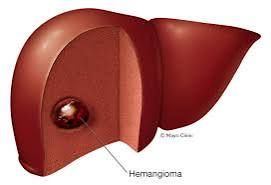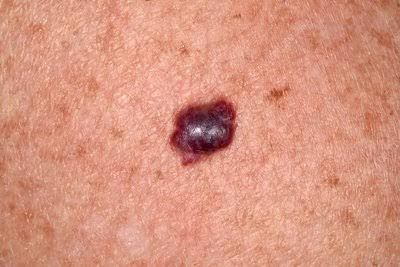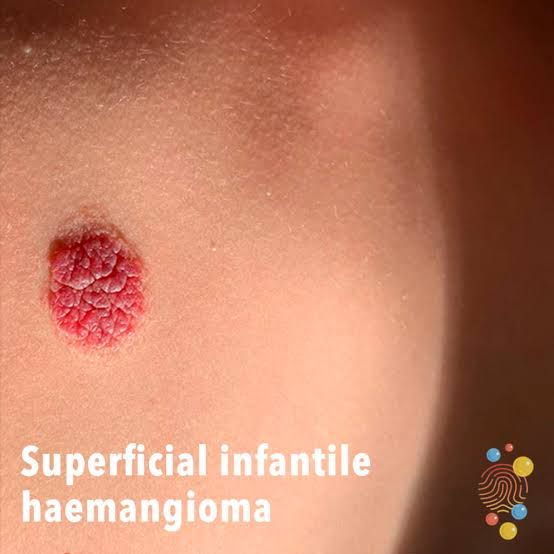Hi everyone, in this post we would continue this discussion on hemangiomas, as we said earlier on that hemangiomas are not only limited to the external skin surfaces, they can also be observed on the internal organs such as liver, brain, lungs, if properly examined or at times could be drug induced as the case may be.
This post would discuss on hemangiomas occuring in other body tissues apart from the skin surfaces.
Now let's take one after the other;
1- Liver Hemangiomas
A Cavernous liver hemangioma or hepatic hemangioma is a localized and benign tumour of the hepatic endothelial cells.
"A cavernous hemangioma happens when capillaries – small blood vessels that connect arteries and veins – swell and form a noncancerous mass called an angioma."Source
Mostly asymptomatic in nature and happens to be the most frequent form liver benign tumour. Due to its asymptomatic nature, it is usually detected incidentally during radiological imaging.
Some thoughts believe that liver hemangioma are congenital in origin. However, different types of liver haemangioma tumours exist, which can cause severe complications and malfunctioning of the liver depending on the size of the tumour and exact location on the liver organ.
2- Brain Haemangiomas
Brain usually occur on one half of the brain. It arises due the capillaries that connects the small arteries and veins together decides to clump together and forms a mass or tumour in the brain. However brains hemangiomas could be disastrous if they bleed leading to seizures and or strokes.
Brain sometimes could remain without any complications while sometimes depends on the accumulated tumours could result into deadly complications.
Brain hemangiomas are treated with mere observation and periodic recall if the formed mass doesn't appear to be life-threatening or could be treated with medication and surgical intervention.
3-Drug-Induced (Haemangioma)
Drug-induced haemangiomas are observed and reported side-effects for some drugs during toxicological studies of some drugs in animal models, or during studying of carcinogenic effects of some researched therapeutic drugs.
"For example, hemangiomas of the mesenteric lymph node were increased significantly at 700 mg/kg/day of Empagliflozin in male rats, or approximately 42 times the exposure from a 25 mg clinical dose. It is inferred from nonclinical animal studies that some drugs can also produce hemangiomas in humans, and careful dosing during therapeutic drug design can ensure their safe use."Source
Diagnosis of Haemangiomas
Diagnosis is usually clinical. Paediatric dermatologists are quite trained in diagnosis and effective treatment of hemangiomas.
Depending on the location of the hemangioma, whether internally or externally located hemangiomas tests such as MRIs or ultrasounds can be employed to detect how far the tumour has gone under the skin and whether it can results into any complications if left untreated.
Treatment of Haemangiomas
Hemangiomas usually fade off gradually over time, and as such do not require any form of treatment intervention in some cases.
However, hemangiomas that may compromise esthetic appearance or that are located at dangerous sites (eyelids, airway) which lead to devastating complications require early treatment.
Haemangiomas are usually treated with beta blockers. Treatment plans are usually based on case to case of each patient, with every case being different and unique in nature
Propranolol or Atenolol are oral beta blockers pharmacological drugs are the first-line treatment of hemangiomas which have proven effective over the years especially in ones that can can complications.
Beta blockers undertook various mechanisms such as narrowing the hemangioma's blood vessels, arresting their proliferations and causing their natural cell death(apoptosis) eventually leading to shrinking and fading of the haemangiomas.
Propanolol has been shown to be very effective in infants especially 2 months of age.
Timolol as a topical beta blocker according to some research happens to be effective in thin surface hemangiomas. However, oral beta blockers should not be used in conjunction with topical beta blockers as some topical beta blockers can have systemic absorption since their site of action is on blood vessels that already has systemic flow of blood in it.
That's all as regards Haemangiomas at least for now. Thanks for your usual cooperation and support. Happy blogging and reading.
Keep blogging and you will reach beyond your imaginations
Video from ilovepathology YouTuber




Telegram and Whatsapp